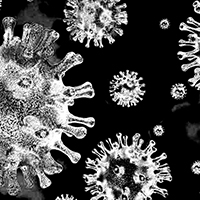Awake prone positioning in non-intubated patients for the management of hypoxemia in COVID-19: A systematic review and meta-analysis

Submitted: September 26, 2020
Accepted: January 28, 2021
Published: April 22, 2021
Accepted: January 28, 2021
Abstract Views: 5674
PDF: 2796
Supplementary: 0
Supplementary: 0
Publisher's note
All claims expressed in this article are solely those of the authors and do not necessarily represent those of their affiliated organizations, or those of the publisher, the editors and the reviewers. Any product that may be evaluated in this article or claim that may be made by its manufacturer is not guaranteed or endorsed by the publisher.
All claims expressed in this article are solely those of the authors and do not necessarily represent those of their affiliated organizations, or those of the publisher, the editors and the reviewers. Any product that may be evaluated in this article or claim that may be made by its manufacturer is not guaranteed or endorsed by the publisher.
Similar Articles
- Amrutha S, Komaldeep Kaur, Deepak Aggarwal, Mandeep Kaur Sodhi, Shivani Jaswal, Varinder Saini, Serial evaluation of antibody titres in patients recovered from COVID-19 and their correlation with disease severity , Monaldi Archives for Chest Disease: Vol. 94 No. 4 (2024)
- Branko Beronja, Aleksandra Karan, Biljana Lukic, Ivana Milosevic, Jelena Dotlic, Tatjana Gazibara, Smoking patterns and outcomes of severe sars-CoV-2 infection: a retrospective cohort study , Monaldi Archives for Chest Disease: Early Access
- Iffat Khanum, Fatima Samar, Yousuf Fatimah, Awan Safia, Aziz Adil, Habib Kiren, Nasir Nosheen, Mahmood Faisal, Jamil Bushra, Role of awake prone positioning in patients with moderate-to-severe COVID-19: an experience from a developing country , Monaldi Archives for Chest Disease: Vol. 91 No. 2 (2021)
- Neeta Singla, Amitesh Gupta, U.K. Khalid, Ravindra Kumar Dewan, Rupak Singla, Clinical profile, risk factors, disease severity, and outcome for COVID-19 disease in patients with tuberculosis on treatment under the National Tuberculosis Elimination Program: a cohort of 1400 patients , Monaldi Archives for Chest Disease: Early Access
- Matteo Petroncini, Leonardo Valentini, Piergiorgio Solli, Pietro Bertoglio, Giant lung bulla as a late-onset complication of mild SARS-CoV-2 pneumonia , Monaldi Archives for Chest Disease: Vol. 94 No. 3 (2024)
- Angelica Cersosimo, Mattia Di Pasquale, Gianmarco Arabia, Marco Metra, Enrico Vizzardi, COVID myocarditis: a review of the literature , Monaldi Archives for Chest Disease: Vol. 94 No. 4 (2024)
- Maya Gopalakrishnan, Satyendra Khichar, Suman Saurabh, Parag Vijayvergia, Karthikeyan Thangaraju, Swapnil Tripathi, Harshavardhan V. Devarakonda, Akhilesh Kumar , Pranav S. Kumar, Mahendra Kumar Garg , Effectiveness of early awake self proning strategy in non-intubated patients with COVID-19 hypoxemia: an open-labelled randomized clinical trial from Jodhpur, India , Monaldi Archives for Chest Disease: Vol. 93 No. 4 (2023)
- D.S.C. Hui, An overview on Severe Acute Respiratory Syndrome (SARS) , Monaldi Archives for Chest Disease: Vol. 63 No. 3 (2005): Pulmonary series
- Unnati Desai, Ketaki Utpat, Aravind Raj, The impact of the COVID-19 pandemic on the profile of interstitial lung disease presenting to the pulmonary medicine department of a tertiary care center in western India , Monaldi Archives for Chest Disease: Early Access
- Frederico Ribeiro Neto, Juliane Machado Marques, Matheus Brasiliano da Paz, Eduardo Boiteux Uchôa Cavalcanti, Rodrigo Rodrigues Gomes Costa, Sit-to-stand test and handgrip strength in men and women with post-COVID-19 syndrome without invasive ventilator support: insights from a Brazilian observational study , Monaldi Archives for Chest Disease: Vol. 94 No. 3 (2024)
You may also start an advanced similarity search for this article.

 https://doi.org/10.4081/monaldi.2021.1623
https://doi.org/10.4081/monaldi.2021.1623





